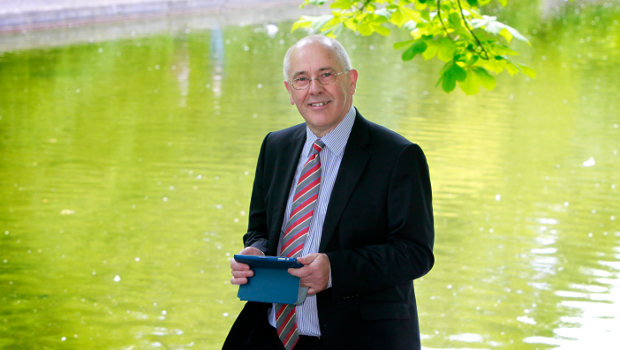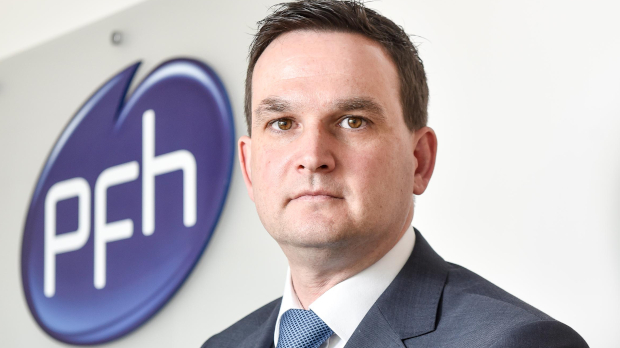
Digital enterprise: a trend transformed?
For many companies heading down a path towards digital transformation, one issue that is often encountered is that the process can be, well, transformative and not just in the ways expected.
Critically re-evaluating systems, processes and procedures and looking critically at the way you do business is a fantastic exercise but asking the question ‘is there a better way to do this?’ can sometimes produce answers that are difficult to digest. Because true digital transformation is about a lot more than just technology, it is about growth and preparation for a future that could be quite different from the past.
So, while the concept of digital transformation has been around for a while now, organisations are increasingly focussing on the journey of transformation and not just the destination and in the process, they sometimes become something different to what they set out to be.
Business change
“Digital transformation is about an organisation going on a journey and looking at new ways of working. It’s about digitising their processes and procedures and marrying that to business change,” said John Purdy, chief executive officer of Ergo.
“In the past, say three to five years ago, we focussed quite heavily on what technology was doing and what should it have been doing. Should this workload be in Azure or AWS or some other hybrid cloud, for example. It was basically about giving people better ways to compute and that is still important.”
However, now the focus is on the business benefits that technology can bring beyond IT and as a result, companies like Ergo are seeing what it terms ‘very significant’ demands for change management services as part of overall digital transformation solutions.

“On-boarding has become absolutely vital along with an acceptance that unless you have change management and onboarding done in a very professional way, the organisation is not going to get the benefit out of the investment it’s made in technology,” said Purdy.
“Because the business benefit is only delivered if there is behavioural change. Does this process allow me to engage with my customer in a more meaningful and engaged manner that enhances my market position, gets me renewed business or improves my margin? It’s very much a business-led and outcomes-led discussion.”
Most of the conversations Ergo is having around the area of digital transformation are “20 to 30% about technology” and 70 to 80% about how to use technology to create a real gear shift in the organisation, according to Purdy.
“The best examples of digital transformation success stories are where an organisation is initially very reluctant to engage with the process. They’re usually very mature businesses that have possibly underinvested for whatever reason, and then they get an opportunity to do this and they see their people being far more productive,” he said.
The most important thing about this process is that if companies are sincere about change, they have to provide staff with the tools to work differently.
Working differently
“We’ve all sat in meetings where the head of the company says ‘we all have to work smarter’ but then nothing actually happens. Everyone goes back to their desks but they still all have the same toolkits. Digital transformation gives companies that are digitally committed the ability to say to staff you now have a toolkit that allows you to behave differently, to be more effective and efficient in the allocation of your time and resources. Now go and focus on the things that really matter,” said Purdy.
“Traffic in our cities is snarled beyond recognition. Rent is crippling people and the average person can’t afford to live in our cities. They can’t afford to travel within the cities but we still need access to people. We need to be able to facilitate people working in the places and at the times that it makes sense for them. We can’t have parameters whereby we all come into the same building at 08:30 every morning, clock in and then go get a cup of coffee and start our day’s work. The world has stopped spinning in that way.”
Marc O’Regan, chief technology officer for Dell Technologies Ireland, thinks that re-engineering to allow for this degree of change is something that many organisations struggle with but it is increasingly becoming a feature of our times.
“Digital transformation should have a fundamental impact on how an organisation’s DNA is aligned with executing its key performance indicators. Over the last fifteen years we’ve been very used to a fundamental way of looking at delivering services, based on traditional technology with a traditional operating model pinned in underneath that technology,” he said.

“But over that time something has fundamentally changed. We’re moving away from a world that is technology centred and moving towards one that is business centred. Where operators used to look down into the technology, we’re now defining the IT world by software instead. At the same time, we’ve introduced automation and orchestration into a lot of the rudimentary tasks that would have taken up a lot of time and effort in the data centre.”
The net effect of this has been to free up people to do higher value tasks. This process has taken place as a result of companies engaging with the idea of digital transformation, looking deeply at their organisational structures and asking fundamental questions about what they were trying to do in business in the first place and how technology supported that.
“Things started to change really around the end of the last decade and the beginning of this decade. We started to define everything in terms of software and to snap away from a dependency on the underlying architecture on the data centre. That was the framework upon which we built our technology operating model and upon which we delivered our services,” said O’Regan.
“In order to be able to do that we brought the compute, network and storage worlds together as well as the domains of the operators who specialise in those specific areas – compute, network and storage.”
“A huge cultural shift needed to happen, and that kind of change has to come from the c-suite. If it doesn’t come from there then we don’t have the competence and structure behind our people needed to actually take this journey into this digital ecosystem,” said O’Regan.
Converged thinking
Looking more deeply forward, O’Regan thinks CEOs and CIOs need to understand that this approach to converged technology is likely to be the rule for some time to come.
“The CIO and CEO that understands that world and who takes a data first approach and a digitally driven approach, they’ll be the winners in this new world,” he said.
David Conway, a partner in Deloitte’s digital consulting team, agrees with the general thrust of the argument that self-examination can result in permanent changes to the goals of a company that engages in digital transformation. However, he further argues that transformation should be a core part of most self-aware organisations.
“Companies have got very good at sensing both the danger and opportunity of disruption. So if I go back five years ago, we were still educating people as to that agenda. But that isn’t really the case anymore – most organisations have got the message that transformation means fundamental change, right?” he said.
“And it isn’t just about optimisation. Most of the clients and organisations that I work with intellectually get that. Probably there are some pockets of lag in different organisations in terms of understanding the role that technology plays, but the more mature an organisation is, the more clearly it sees that technology is an enabler as opposed to an answer or some kind of panacea.”
Agile & digital
One interesting thing that Conway has observed happening more often in recent months is organisations engaging in agile transformation hand-in-hand with digital transformation. “They’re trying to adopt new ways of working, trying to pivot into a new operating model and trying to fundamentally alter how they work,” he said.
“If I go back two years ago, we’d gotten past the disruption and opportunity aspect of digital transformation and we’d probably got past the technology enabler aspect as well. But we still had to educate a lot of clients that actually, change means you have to change, you have to be willing to do stuff differently,” said Conway.
“Today we don’t have to do that really anymore. It’s about helping organisations succeed with that change.”
Conway highlights the irony of Conway’s Law – no connection to him – which was coined in 1967 by programmer Melvin Conway that states that people tend towards designing software that replicates the communications structure of their own organisations.
“So the point is that it’s actually very hard for people to design systems that really break away from what they’re used to. I’d say that with nearly every digital transformation project that I embark on with clients, this is an issue. Even though intellectually they all get it, they find it really hard to engage with the change dynamic from a human level.”

The reality is that if a company identifies that changing would push it forward, it has to stop doing what it does today. And if the executives with the decision making power in a company like this have been doing things the same way for 20 or 25 years, that can be really challenging.
“They have a lot of experience doing things the way they do them, and then they have to fundamentally alter the job that they do. And the irony in this is that if that fundamentally changes and transforms the organisation, in some ways they can become redundant,” said Conway.
“So it’s less a technology question and more one that gets into quite zen-like stuff about people’s capacity to change and to alter patterns, because the tools, skill sets and capabilities that organisations need to do things in the future are actually quite different to how they are today. And that’s really, really hard for some people to come to terms with.”
Added to this difficulty is the fact that historically the IT department of larger companies was mostly used to iterative and not radical change. So expecting change to come from that direction can be a big ask.
Beyond iterative
“Businesses find it very, very hard to transform, digitally or otherwise. Digital transformation is great in concept – become omni-channel with multiple routes to the customers and so forth, but how do you implement that?” said Stephen O’Herlihy, chief technology officer for PFH Technology Group.
“How do you take a traditional operations team and expect them to innovate? IT staff historically haven’t been great innovators – change usually came from line of business departments such as marketing and sales.”
PFH Technology Group sees itself as a traditional ICT-type vendor and system integrator, and as such its relationships tend to be with both the operations and IT management sides of its clients. The challenge with digital transformation is that it’s for the IT department to service the line of business departments.

“When the marketing department turns around and says ‘we should have an app for that’ or ‘we should be selling that through this omnichannel or this mechanism,’ it’s the IT department that has to try to provide that as a service,” said O’Herlihy.
“But what we have seen is that often they bypass IT and go straight to the public cloud for the functionality they need because the IT department isn’t agile enough and isn’t able to respond to their needs. The people and processes just aren’t there.”
“From a digital transformation perspective, it’s pretty clear to us that it’s been driven by the line of business and there is often a gap between traditional IT and what the business is doing in relation to innovation. But we have seen people in IT move from traditional IT roles and become, for example head of innovation.”
So while digital transformation has delivered massively on the promise of revealing new and more agile ways of working, it can bring with it fundamental change to a lot more than just the digital aspects of how a company does business. The issue remains though, once the realisation of fundamental organisational change has been made, whether the organisation has the will to realise the vision or simply optimise on the way to improvement as opposed to metamorphosis.








Subscribers 0
Fans 0
Followers 0
Followers